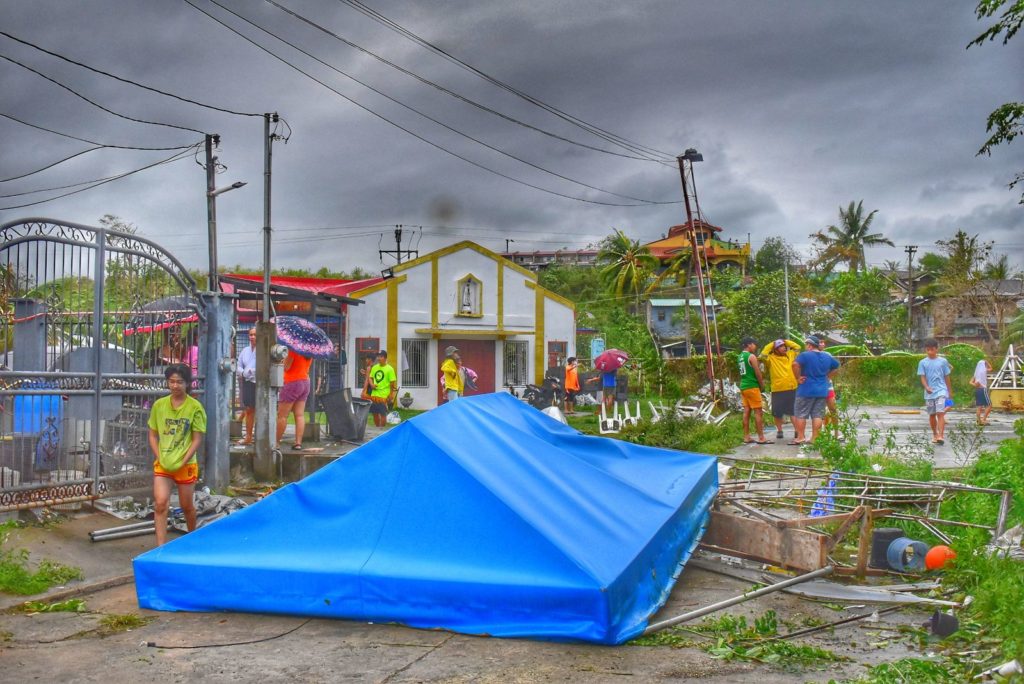Living on a tropical island has its pros and cons. Lush greenery and pristine blue waters an arm’s length away surround you. There’s always fresh food and the warmest of people.
On the other hand, you may also be on the receiving end of natural disasters such as typhoons. One of the recent ones that made a mark was Typhoon Odette.
Odette was the fifteenth storm to hit the Philippines in 2021 and the strongest to make landfall that year. The typhoon strengthened from being a category 1 to category 5 in just one day, making it difficult for people to prepare and evacuate.

Typhoon Odette left in its wake dismantled structures across Cebu province.
It took over a month to restore power to close to 500,000 households and establishments in Metro Cebu alone. During this period, most of them struggled to survive their day-to-day lives. Having no power supply also meant having limited to no access to necessities.
More than five months since Odette, what lessons have we learned?
Thorough disaster preparedness cannot be disregarded, not just on a macro-scale by the government, such as providing evacuation areas and rescue vehicles, but also on a micro-scale.
After the onslaught of the typhoon, affected people took time to share their accounts on social media as to what happened with Odette, and the steps they took.
Mary, a boutique hotel manager, shared that aside from taking care of her own family’s needs during this time. She also had to make sure that the tourists that were stranded in the hotel had their needs met because they aren’t familiar with the city.
Individual households should have disaster preparedness plans that depend on what they need. Listen to the news updates, and don’t underestimate the typhoon’s intensity. Stock up on basic needs like food and drinking water. If one owns a vehicle, it’s vital to ensure that it has enough fuel. Remember also to keep essential documents in a secure place. Preparation of enough cash is also necessary because cash is the king after a strong typhoon. It is uncertain if cash dispensing machines have power supply.. Cebu Private Power Corporation (CPPC) swiftly took action by providing power to areas of Cebu City needing it the most within three days after Odette.
Quick disaster response is also as important as disaster preparedness. It is the key to saving more lives and properties. Odette left the city in ruins, destroying thousands of power lines and other structures. On a smaller scale, it is wise for households to prepare a hammer, saw, and nails for immediate repairs to their homes.
Typhoon Odette downed thousands of power lines in Cebu, resulting in a province-wide blackout. Losing electricity also means losing access to some essential things like potable water.
Cebu Private Power Corporation (CPPC) swiftly took action by providing power to areas of Cebu City needing it the most within three days after Odette. Fortunately, CPPC has the unique capability of supplying directly to Visayan Electric Company, making the response to provide electricity faster, especially to hospitals and water pumping stations.
Aside from faster power reconnection, CPPC also provided free charging for electric tricycles less than a week after Odette, which helped aid in transportation needs in the city. An embedded power plant undoubtedly helped in disaster response since the first few days after a disaster can be the most challenging and crucial.
Third, working together has strengthened response and recovery from Odette. Cooperation among government, private companies, non-profit organizations, and individuals made it possible for essential services to reach people and repair different establishments quicker. Companies located outside of Cebu lent helping hands in the ways they can.
The assistance of electric companies from outside the island also helped make power restoration faster. The government response also swiftly provided shelter and supplies to people who lost their homes. And those individuals who can give help give it through ways that they can, may it be providing food to their neighbors or offering their homes to those in need. The toughest of times bring out the most accurate representation of Bayanihan.
A disaster of this intensity is not something anybody would like to happen again. Before Odette, Ruping was the most devastating typhoon in Cebu – and that was 30 years ago. But there’s really no telling what might happen down the road. We need to take the lessons from our past, use them to our advantage, and grow more resilient as we move towards the future.

